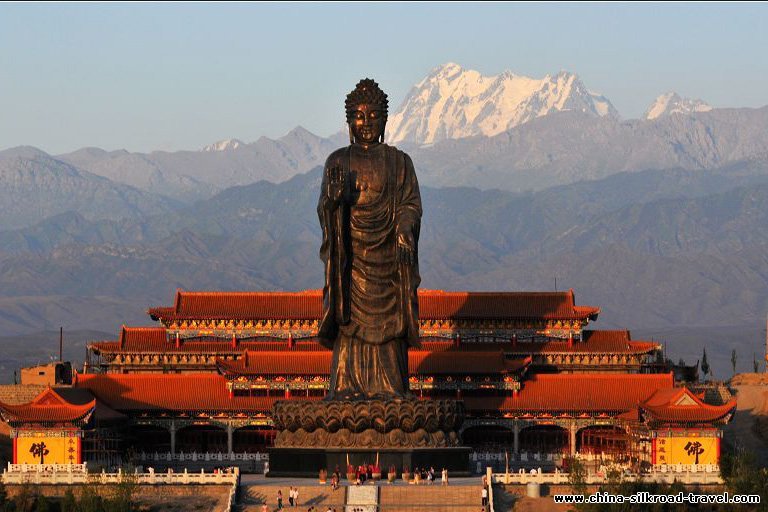Home > Xinjiang Travel >
Xinjiang Religion
Post Time:2019-12-26 Views:
China is a country of great religious diversity and freedom of religious belief. It has over 100 million followers of various faiths, more than 100,000 sites for religious activities, about 300,000 religious personnel and over 3,000 religious associations. These associations run 76 religious schools and colleges to train religious personnel. In China, all regular religious activities - such as worshipping Buddha, chanting scriptures, praying, expounding on scriptures, holding Mass, baptism, initiation into monk- or nun-hood, Ramadan and observance of religious festivals - are all managed by the religious personnel and adherents themselves, are protected under the law and are free from interference. The holy books of each religion are published and distributed by religious associations. Each religion in China has its own national periodical, which is also circulated abroad.


The main religions are Buddhism, Islam, Roman Catholic and Protestant Christianity, China's indigenous Taoism, Shamanism, Eastern Orthodox Christianity and the Naxi people's Dongba religion. The Hui, Uygur, Kazak, Kirgiz, Tatar, Ozbek, Tajik, Dongxiang, Salar and Bonan peoples adhere to Islam; the Tibetan, Mongolian, Lhoba, Moinba, Tu and Yugur, to Tibetan Buddhism (also known as Lamaism), and the Dai, Blang and Deang to Hinayana Buddhism. Large numbers of Miao, Yao and Yi are Catholic or Protestant Christians. Religious Han Chinese tend to practice Buddhism, Christianity, or Taoism.
Buddhism was introduced into China from India around the first century AD, growing increasingly popular to become the most influential religion in China after the fourth century. Tibetan Buddhism, as a branch of Chinese Buddhism, is popular primarily in Tibet and Inner Mongolia. Now China has more than 13,000 Buddhist temples.
It is probable that Islam first reached China around the mid-seventh century. The Yuan Dynasty (1271-1368) wit
Buddhism was introduced into China from India around the first century AD, growing increasingly popular to become the most influential religion in China after the fourth century. Tibetan Buddhism, as a branch of Chinese Buddhism, is popular primarily in Tibet and Inner Mongolia. Now China has more than 13,000 Buddhist temples.
It is probable that Islam first reached China around the mid-seventh century. The Yuan Dynasty (1271-1368) wit
nessed the zenith of prosperity of Islam. Now China has more than 30,000 mosques.
Catholic influence reached China in the seventh century, and Protestantism was introduced into China in the early 19th century. Now there are more than 4,600 Catholic and over 12,000 Protestant churches, as well as over 30,000 other types of Christian places of worship in China.
Taoism is based on the philosophy of Lao Zi (traditionally said to be born in 604 BC) and his work, the Dao De Jing (Classic of the Way and Virtue). It probably took shape as a religion during the second century, and China now has more than 1,500 Taoist temples.
Catholic influence reached China in the seventh century, and Protestantism was introduced into China in the early 19th century. Now there are more than 4,600 Catholic and over 12,000 Protestant churches, as well as over 30,000 other types of Christian places of worship in China.
Taoism is based on the philosophy of Lao Zi (traditionally said to be born in 604 BC) and his work, the Dao De Jing (Classic of the Way and Virtue). It probably took shape as a religion during the second century, and China now has more than 1,500 Taoist temples.
Rites and customs are very important for Muslims in all Muslim regions. In fact, rites and customs have been part of their lives. Since Islam was introduced to China, especially since it was introduced to the hinterland, some rites and customs have been attached particular importance to and have developed significantly. Different from other religions, Islam is mainly disseminated through kinship. Especially when the original Muslims came to China, they had not formed an independent organization or a nationality, and rites and customs became an effective way of communication and the tie of unification.
In ancient China, since Islam was an exotic culture and Muslims were immigrants, there were inevitable conflicts between the Han people and the Muslims. The psychological impacts on the Han people by the rule of Mongolians in the Yuan Dynasty (1271-1368) made them have a distorted view on Muslims and their beliefs. This, in turn, made the Muslims more persistent on their rites and customs to avoid assimilation.
Due to the factors mentioned above, rites and customs have become an important part of Islam and gained obvious characteristics, which are mainly as follows:
A. Elements of Buddhism and Daoism as well as the Han culture were absorbed into Muslim rites and customs, which were particularly obvious on some festivals and wedding ceremonies;
B. There is a sense of patriarchal clan system in rites and customs
Due to the factors mentioned above, rites and customs have become an important part of Islam and gained obvious characteristics, which are mainly as follows:
A. Elements of Buddhism and Daoism as well as the Han culture were absorbed into Muslim rites and customs, which were particularly obvious on some festivals and wedding ceremonies;
B. There is a sense of patriarchal clan system in rites and customs
Xinjiang Travel



